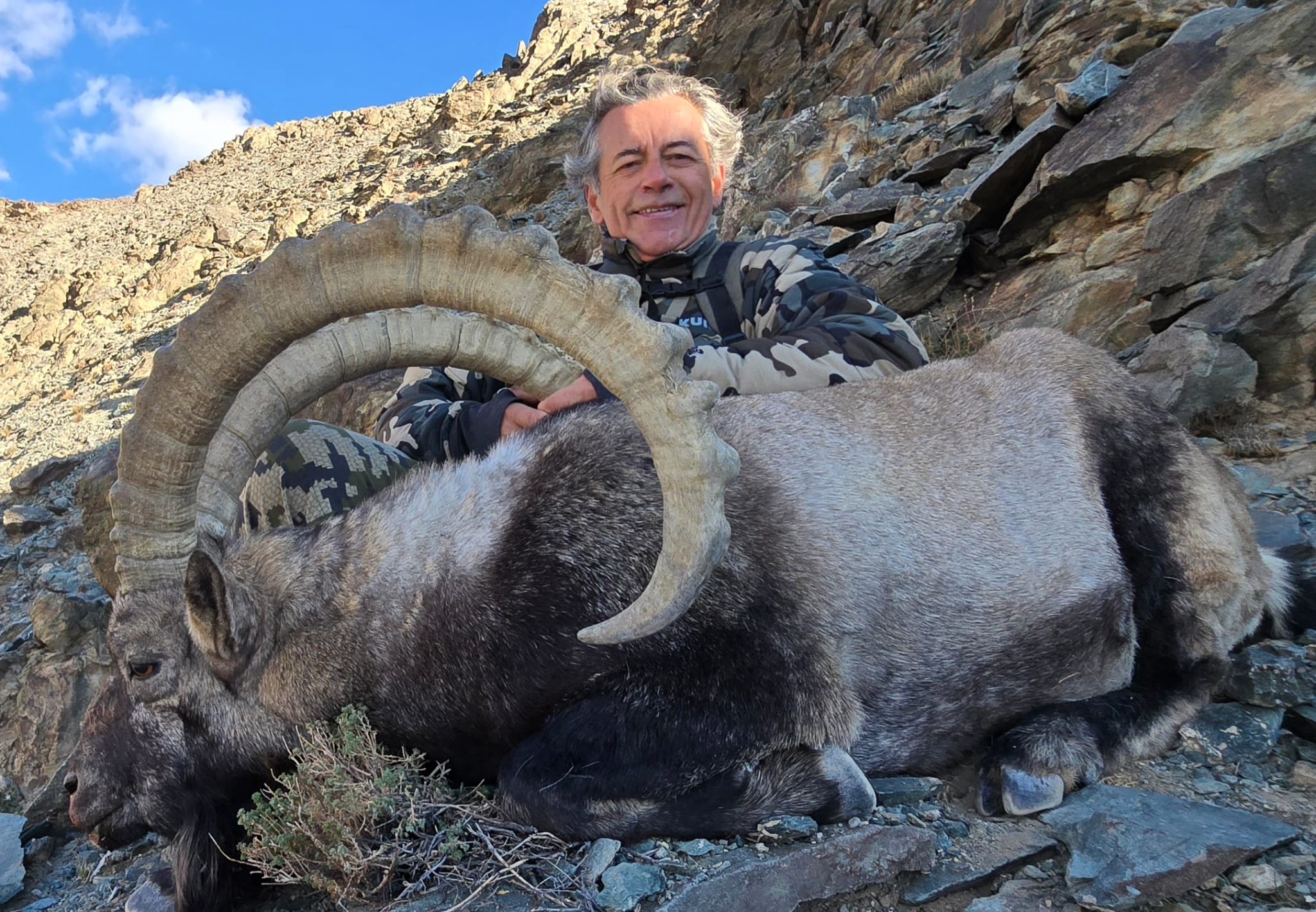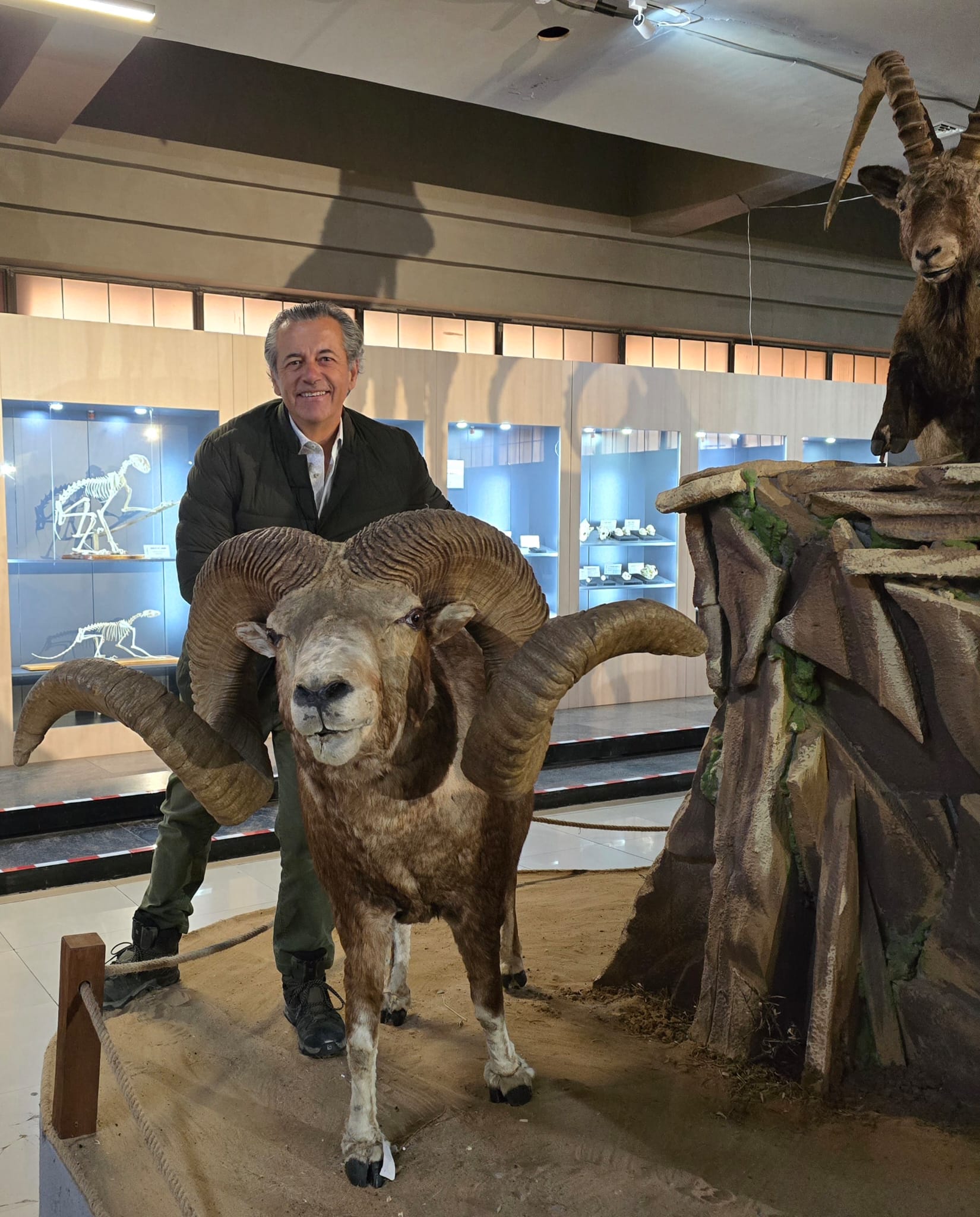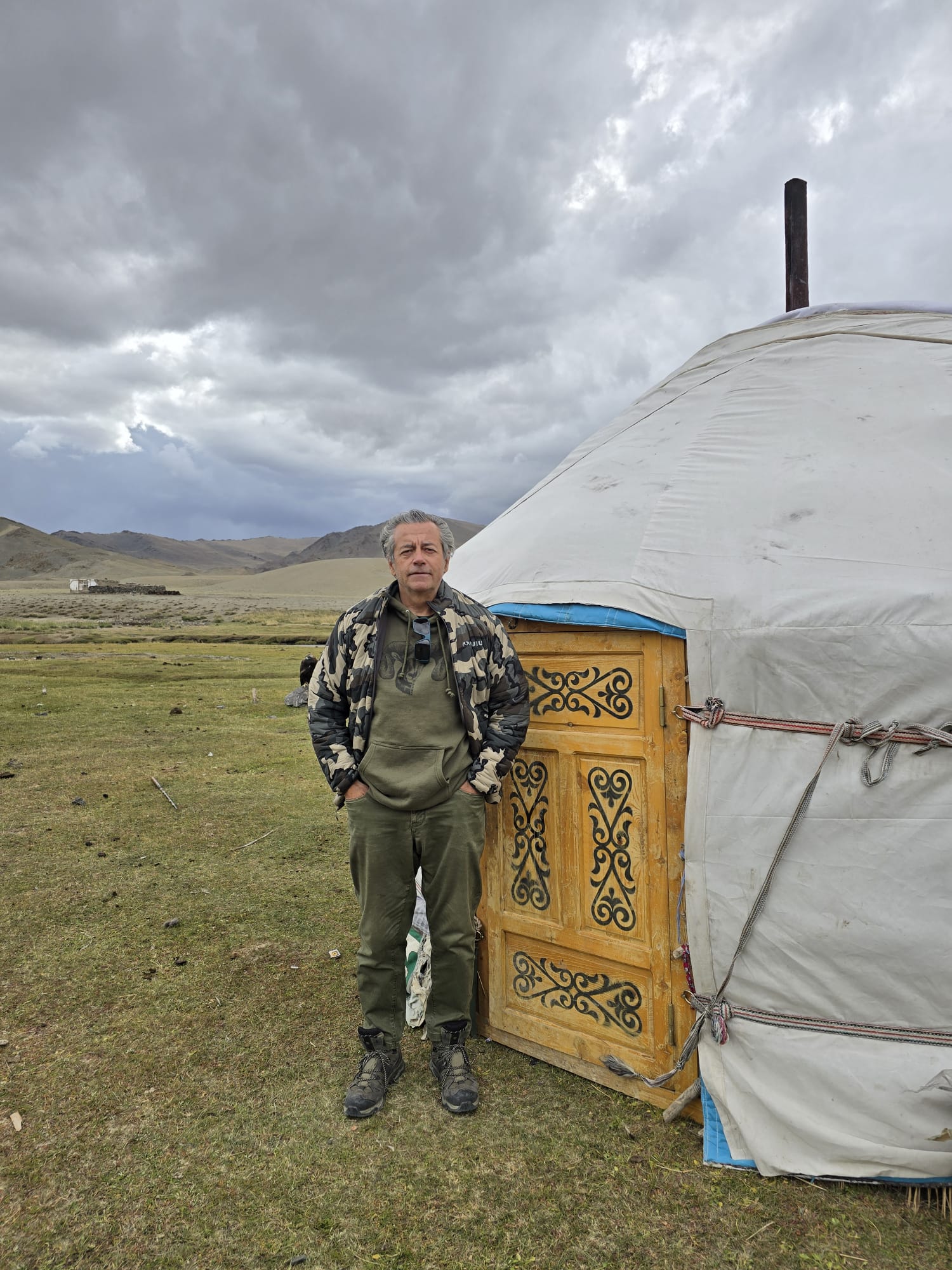
Chasing the Altai ibex
Mountain Range: Altai Mountains
Area: KHOVD
Altitude: 2501 - 3000
Organizer: MONGOL TOUR- MEZDI
Eduardo Martin
Altai Ibex
The Altai Mountains, cradle of ancient nomadic civilizations and a natural frontier between Russia, Mongolia, China, and Kazakhstan, are a land where history and nature merge into legend. Among peaks that rise above 4,500 meters, it is said that the Turkic peoples emerged and that the Scythians forged their warrior spirit. The name Altai means “Mountains of Gold,” and not by chance: its valleys hold age-old petroglyphs, archaeological treasures, and stories whispered across generations.
The landscape is wild and overwhelming: endless larch forests, glaciers flowing like frozen rivers, deep gorges, and plains that stretch to infinity. The climate is merciless, with winds that cut like blades and dawns painted in fire. In this mythical setting lives the Altai ibex, a legendary creature, a symbol of endurance and resilience, mastering impossible cliffs and the eternal snows.
It was to these mountains that we came, driven by the passion for hunting and the desire to measure ourselves against a land seemingly frozen in time.
Hunting here is not the most physically demanding, as four-wheel drives can take you up to 2,500 meters. Yet the true challenge lies in patience, in strategy, and in the decisive moment when, after spotting a herd, one must summon the courage for the approach.
On the third day, the air felt different. We rose at 4 a.m., driving through darkness for two hours before reaching the foothills. There, dawn greeted us with a sky ablaze in crimson fire, a spectacle that burned into memory. But beauty came with a price: a biting cold and winds so fierce they seemed to forbid us from even lifting our heads.
We pressed on, and soon a herd of ibex appeared. Among them stood several large males, which bolted into the distance at the first sign of us. It was time to leave the comfort of the vehicle. We shouldered packs and rifles and began the climb. The air grew thinner, muscles burned, but the thrill of the pursuit drove us higher.
After an hour’s ascent, we reached a vantage point. There, deep within a gorge, we found them again. One stood out—a darker, older male. At 380 meters, he was within range, but the wind howled with such force that the shot would be reckless. I hesitated, then chose restraint: better to hold than to miss and scatter them into the vastness.
We climbed further to the ridge, circling the mountain, descending later through brutal, steep terrain. Time and again we glassed, only to find nothing. Then suddenly, one appeared, barely 100 meters away, but too young. We waited in silence. Moments stretched into eternity until a horn moved—slowly—at 120 meters to our left.
The silhouette emerged, majestic and commanding. I steadied myself, breath held. First the horn, then the head, then the neck… at last half its body revealed itself. The world narrowed to that instant. I squeezed the trigger.
The ibex tumbled down the slope as the guide’s voice rang out: “Perfect shot!” Euphoria erupted—we embraced, shouting with joy. I called Luis’s son, who had also been within range, but a mishap with his pack kept him from the shot. A pity, for fate had nearly granted us a shared moment of father and son.
Descending to the fallen beast, we found an old, dark male, perhaps thirteen years of age—likely the same one glimpsed at dawn. Majestic, venerable, worthy of reverence. We took our photos and returned to the truck, hearts pounding, happier than children at a fair.
The days that followed offered experiences beyond hunting. We visited a nomadic settlement of horse and yak herders. Hospitality overflowed: they welcomed us into their yurts, offered us tea with milk and local cheeses, and showed us their golden eagles. Released into the sky with lures, these birds embodied the very spirit of the steppe. To hold one on the falconer’s glove was to feel the weight of ancient power.
We even rode their horses. Luis, who had never mounted before, found himself on a beast that bucked like a rodeo bronco. Panic seized us for a moment, then laughter: he held on with sheer will and earned forever the nickname “the horseman of Puertollano.”
Later, we tried our luck fishing for trout in the river, though fortune did not smile upon us. Our journey closed in Ulaanbaatar, where we visited the Museum of Nature and stood in awe before Mongolia’s record argali, its horns stretching an astonishing seventy-two inches—a living monument of the mountains.
That night we slept in the capital, and at dawn began the long road home to Madrid. As always on such journeys, the body returned weary, but the spirit carried the glory of the mountains and the indelible memory of days lived to their fullest. Coming home to family and friends closed the circle of an epic adventure.
Report Gallery



